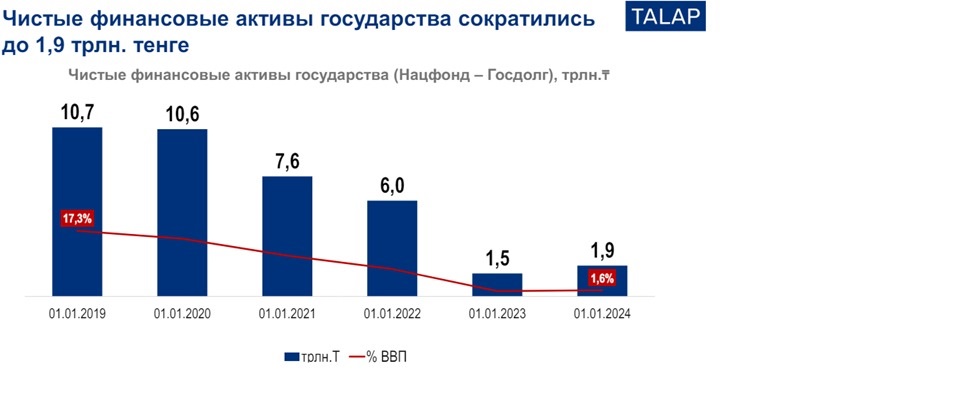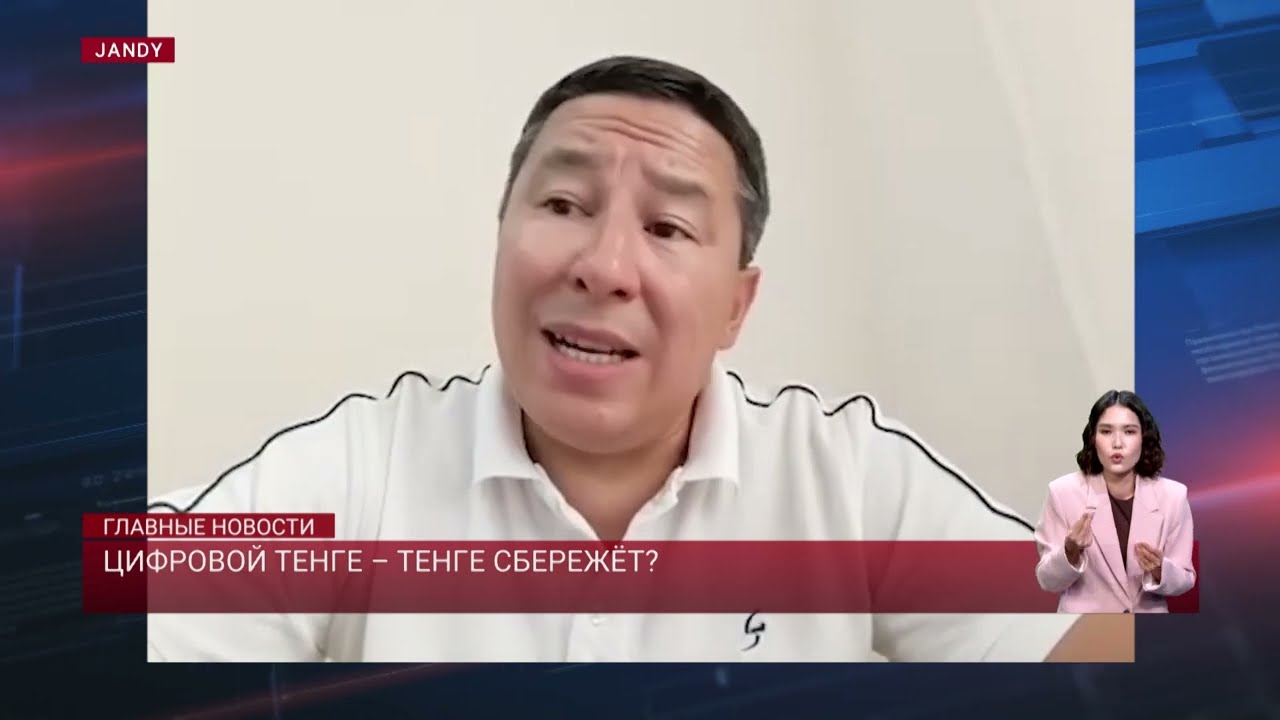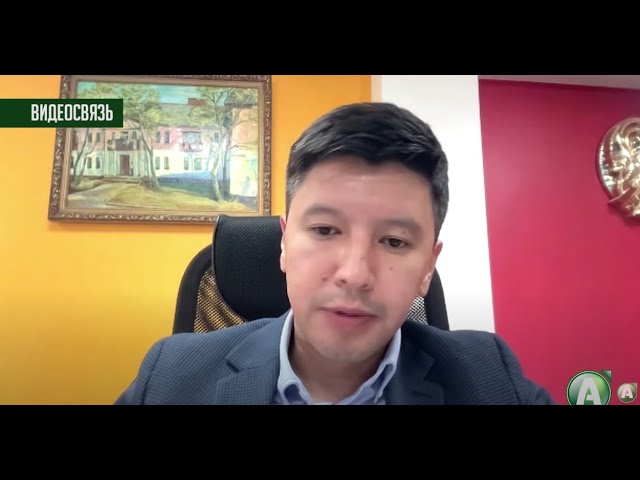In his speech, Vice Minister of National Economy Azamat Amrin said that the figures of public debt show the following dynamics: in January 2020, it amounted to 23% of GDP, in 2021 it increased to 29%, then there was a decrease: in 2022 - 26%, in 2023 - 24%, on January 1, 2024 year - 22%, transfers inbusiness.kz .
"In general, the general trend is decreasing. The covenants stipulated by the concept of public finance are strictly observed. The level of debt suggests that there is a margin of safety. Regarding the possibility of a public finance crisis in Kazakhstan, there is currently no such threat. The long-term forecast is also taken into account in the Budget Code, all analyses are carried out conservatively and carefully, taking into account all possible risks," the Vice Minister concluded.
In turn, Murat Temirkhanov, adviser to the Chairman of the Board of Halyk Finance, noted that if the state takes the initiative to build 100 schools and 100 hospitals, then it is necessary to take into account the limits and the real possibility of implementing these projects. However, this approach is not followed in our country, as they often resort to using budget reserves. Last year, 5.3 trillion tenge was withdrawn from the budget, and 3.6 trillion tenge was approved for the current year, of which 1.4 trillion tenge was spent in the first quarter. Projections show that if such a rate of expenditure is maintained, more than 5.6 trillion tenge will be spent per year. The plan for April for conversion in the amount of 1.1 trillion tenge was also approved.
"If this approach continues, we will either have to dramatically increase transfers and look for ways to finance, or change the approach to planning. If the budget is not expanded, this could have a serious impact on the economy. Currently, we are supporting the economy, keeping the tenge exchange rate stable, but if transfers are sharply reduced, this will entail changes in the exchange rate, interest rates and inflation. Therefore, it is necessary to radically change the approach to planning and financing," Marat Temirkhanov stressed.
According to him, the draft of the new budget code has certain improvements in the field of project financing, but there are fundamental problems that can lead to a crisis.
"At the moment we are spending too much and borrowing too much. If we continue to increase transfers, develop schemes with KMG and pour trillions of tenge into the budget to support falling tax revenues, this will be a medium-term problem, since we will still be in debt. In the event of a crisis, we will not be able to increase the budget, as there will be no source for this. If we adhere to the rules and extract only 3.6 trillion tenge, we will have a decrease in the sale of currency on the market, perhaps a political or other crisis will arise," Murat Temirkhanov believes.
Askar Kysykov, Director of the Talap Center for Applied Research, cited data on the role of the state in the country's finances, noting that the total amount of revenue is more than 40 trillion tenge or almost 40% of GDP, taking into account the budget, quasi-public sector and extra-budgetary funds. The state's share in the country's finances is very high.
"The flows of extra-budgetary funds, such as the UAPF, GFSS, and MSHI, are increasing, and almost 3.3% of the country's income is redistributed through these funds, which is comparable to taxes due to their mandatory nature. The burden on the payroll is increasing, and most of this burden occurs outside the budget. It is predicted that the load on the FOT will increase from 36 to 41%, which exceeds the average of the OECD countries," he said.
The second problem, according to the speaker, is a chronic budget deficit and a reduction in net assets. Despite the existence of a steady trade surplus and high oil prices, the consolidated budget is in deficit. In the last five years, despite tax revenues and high oil prices, the situation with the deficit of the consolidated budget remains relevant. The question is how to finance the expenses. One option is to increase the national debt, which has grown by 77% over the past five years. This leads to the fact that net assets tend to zero, amounting to 1.6% of GDP or 1.9 trillion tenge.

According to Askar Kysykov, today there is no opportunity to spend, since debt obligations have almost equaled savings. Given the debt of quasi-state companies in the amount of 7 trillion tenge, part of which is denominated in dollars, we get a negative balance - we owe more than we have assets. Over the past five years, the cost of servicing the public debt has increased 2.7 times. It is planned that 2 trillion tenge will be allocated in the budget for 2024 to service the public debt.

Another problem is to increase budget expenditures without increasing efficiency. Over the past three years, spending has increased by 60%, with the main items of expenditure being education, social security and debt service. However, 80% of such costs are current, not capital expenditures, which does not contribute to the development of the country. The increase in expenditure items is the purchase of services and works carried out through tenders, Askar Kysykov cited the data.

"The main argument of the government is that social spending accounts for 52%, but there are other 48% - it's spending on the economy, national spending, defense and security. There is another way of looking at budget expenditures. This is the so-called economic classification. That is, according to the economic classification, only 35% of budget expenditures are spent on payments to the population – this is the wage fund, pensions, social benefits, which are targeted from the budget to a specific person. The remaining 65% of budget expenditures are construction, procurement, capital expenditures, transfers, subsidies, budget loans, and so on. That is, the field for optimizing these costs is huge. Almost 2/3 of the budget can and should be optimized and improved," the expert stressed.
Author: Майра Медеубаева
Source: https://inbusiness.kz/ru/news/net-vozmozhnosti-tratit-dolgi-kazahstana-prakticheski-sravnyalis-s-nakopleniyami-ekspert



